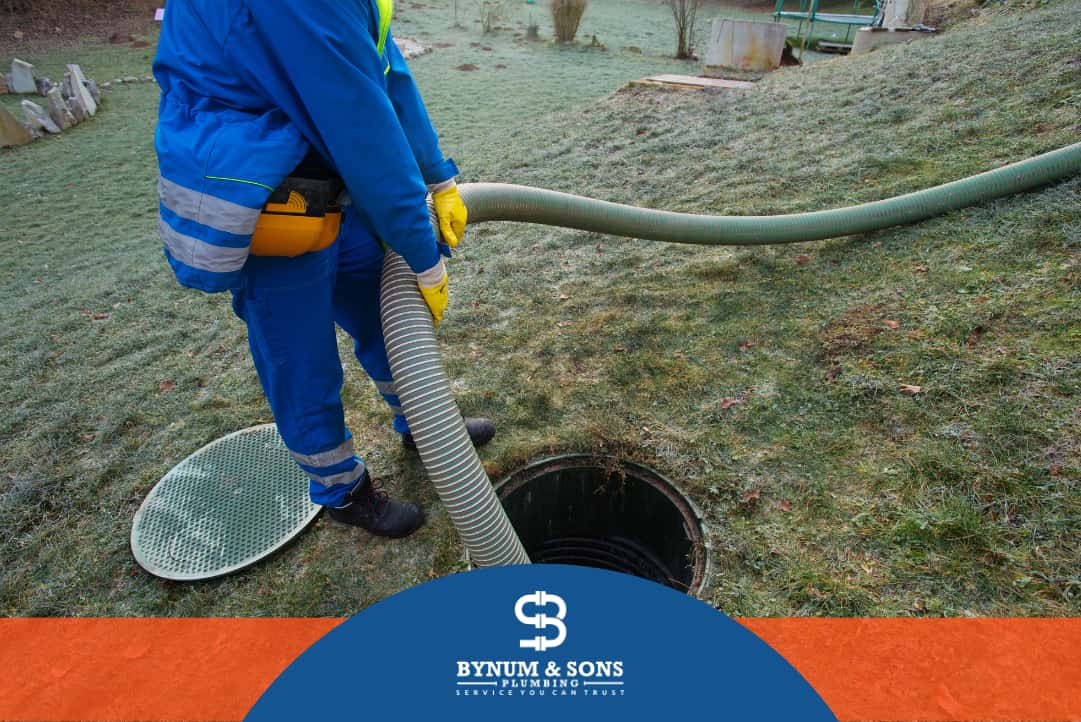An average homeowner doesn’t understand all septic terms because they don’t have to. It’s easier to call someone and let them do their thing. But ignorance is dangerous.
You don’t have to absorb every bit of info about septic systems, yet knowing basic terms ensures that you won’t pay for services you don’t need. Not only that, but you’ll be able to communicate your problems clearly. Your plumber will be thankful for that.
We suggest you save this glossary and come back here when you think you have a problem.
Application Rate
The application rate is septic tank effluent flowing into an absorption bed or drain field in gallons per square foot.
Baffles
Baffles are flow-restricting components found in distribution boxes and septic tanks. They stop sludge and scum from the septic tank from draining into the field. They also lessen the effluent’s velocity as it leaves the septic tank.
Biomat
The biomat (biomaterial layer), a result of decomposition, is made up of biological material that includes minerals, sulfites, organic materials, and microbes. Pathogens are processed out of the effluent before it is returned to the nearby water table, which is an essential component of your septic system.
Blackwater
Blackwater (septage) is waste from toilets and kitchen drains.
Cleanout
Cleanout is an opening in the septic tank through which sludge and scum are pumped out.
Discharge Effluent Pipe
A discharge effluent pipe is a pipe that conducts septic effluent from a septic tank to the absorption bed.
Distribution Box
The distribution box (D-box) distributes liquid effluent flowing from the septic tank to the drain field.
Drain Field
A drain field is the vital element of your septic system where perforated pipes are installed in graveled trenches. It’s an absorption bed that gathers and treats septic tank effluent before reintroducing it to the nearby water table. That’s why the quality of drain field installation matters more than an average homeowner thinks.
The wastewater filters through the soil as it travels downward toward the groundwater. The efficiency of your septic system depends on the soil’s capacity to absorb water.
Drain Field Failure
Drain field failure can occur due to kitchen grease, an overload of organic material, age, lack of maintenance, or sodium in the wastewater from cleaning products and dietary salt.
Effluent
Effluent is the partially treated liquid wastewater that flows from the septic tank to the drain field. Large solids settle to the bottom of the tank. Light solids and grease coagulate into a scum layer on the top.
FOG
FOG stands for fats, oil, and grease that form a floating layer of scum in the septic tank.
Gravity-Fed Septic Systems
Gravity-fed septic systems are the most common septic solution. Thanks to gravity, they take effluent from the house to the septic tank and then to the drain field.
Greywater
Greywater is water from bathtubs, showers, lavatory sinks, and laundry appliances and excludes blackwater.
Holding Tank Septic System
Holding tank septic system systems with septic holding that store wastewater and household trash in sealed tanks. Since they lack drainage, the waste must be pumped out when they get filled.
Retention Time
Retention time is the time that effluent remains in the septic tank before moving to the absorption system.
Scum
Scum is the upper layer of sewage in the tank. It’s composed of materials that float on water (grease, oil, and fats).
Septage
Septage is the waste from toilets and kitchen drains which forms sludge and scum.
Septic Tank
Septic tanks are closed containers that hold domestic sewage to start the bacterial operation of breakdown. They need to be pumped every 3 to 5 years, but there are signs that your septic tank needs pumping.
Sewage
Sewage is a mixture of water, human excreta, used bathroom water, waste from cooking, laundry wastewater, and other everyday wastes.
Sludge
Sludge is the bottom layer that forms in the septic tank. It’s formed by heavier solids that precipitate at the bottom of the tank. The same as scum, it needs to be removed by periodic pumping.
Wastewater
Water from the household from sinks, showers, laundry appliances, toilets, etc.
Water Table
The water table (groundwater table) is the natural level at which the earth is wet.
Now you have the 22 most important septic terms at the same spot. So you won’t have to guess where the problem is if you notice something is wrong. Or at least, you’ll be able to share educated guesses with the company that takes care of your septic system.
And if you want to leave your home in the experienced hands, call a family-owned plumbing company in Lawrenceville, GA.




